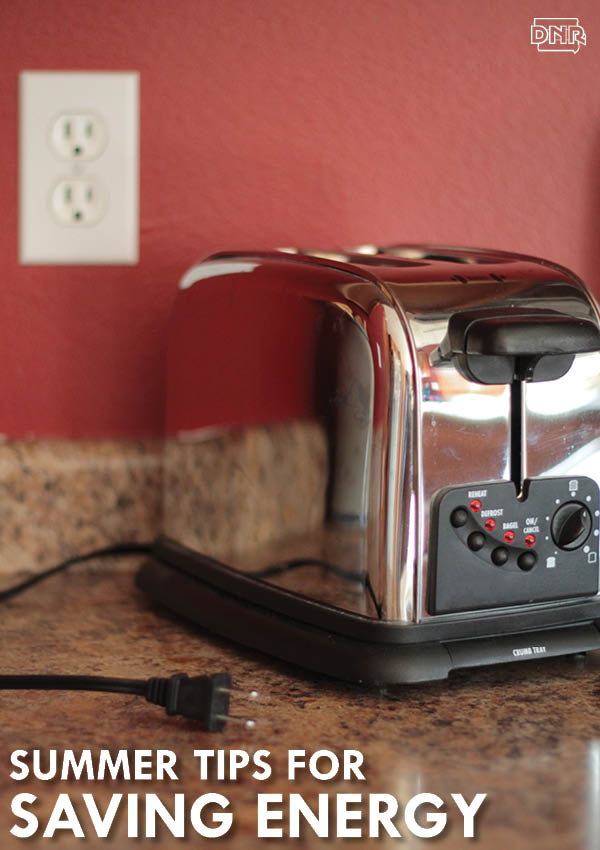 Check out these money- and energy-saving tips so you can be prepared to beat the heat this summer.
Check out these money- and energy-saving tips so you can be prepared to beat the heat this summer.
1. Program your thermostat. Make use of your thermostat, and if you don’t currently have a programmable model consider investing in one. They’re easy to install, and can save you money without you having to think about it. When programming your thermostat, check the default temperature setting first, and adjust it accordingly. When you’re asleep or away at work, let the temperature rise so you don’t have to pay for cooling you don’t enjoy. Avoid lowering the thermostat temperature while air conditioning is running, as this may overly cool the house and result in energy waste.
2. Use your windows. Most of Iowa cools off at night, so open your windows and make use of the natural cold air. Opening windows on multiple sides of a room or placing a box fan in the window can help increase air circulation, which helps you stay cooler via a wind chill effect. Make sure to shut the windows again in the morning before things heat up, and consider investing in specific curtains to reflect sunlight and insulate to keep your home cool.
3. Use your drapes. Southern- and western-facing walls take the brunt of the sun’s heat in Iowa. Find the windows on these walls in your home, and invest in drapes or shades for them that will trap and block heat while letting in natural light. This will lead to less electrical light use and decreased need for cooling.
4. Be a fan of keeping cool. Using ceiling fans can help you feel as cool as if the thermometer were set four degrees lower. Give your thermostat a break and save some energy by raising the temperature those four degrees while fans are running. However, stop running the fans if you leave the house - they won’t keep it cool while you’re away. Fans help cool via a wind chill effect, so they only work for people, not houses. Also note whether or not your fan is reversible. If an edge of the blade tips upwards when the fan is resting, that edge should lead rotation in the summer. This will help to pull hot air up and away from you. In winter, rotation should lead with the downward edge to circulate rising warm air back through a room.
5. Ventilate the bathroom. While a cold shower can be refreshing, many people don’t want to brave freezing water first thing in the morning. If you can’t do without your comfy warm water, make sure to close the bathroom door and run the ventilation fan to keep that warmth from spilling out into the rest of your home.
6. Air dry dishes and clothing. Running clothes dryers and the dry cycle on your dishwasher inherently generates heat. Instead, try using the heat outside to dry your clothes on a clothesline, and let your dishes drip dry in a dish rack. If you don’t have a clothesline, improvise by tying a length of clothesline rope between trees or other anchor points in your yard. Check the weather forecast first and avoid colored strings, as the color may bleed into your wet clothes. It’s a little more work, but air drying will actually help prevent wrinkles and shrinking in your clothing.
7. Reduce electronics use. Electronics all generate some heat while running, from your television to your alarm clock. Unplug things you’re not using during the day to cool off. This includes things like lamps, even if they’re not on. Just being plugged in allows electricity to flow through the wiring of your devices, and this generates a small amount of heat. Still, compound that by all the things plugged in around the house and you’ll feel the difference.
8. Prevent air leakage. Insulation isn’t just for winter. Make sure your attic and walls are well-insulated and well-maintained, your windows close tightly and you front door fits in its frame snugly. If not, take preventative measures like weather-stripping the door frame and installing shrink film in neglected windows to prevent your cool air from escaping.
9. Cool down your water heater. This will help you save energy and avoid burning yourself. The U.S. Department of Energy says water heating can account for 14 to 25 percent of your total energy use, so turning your heater down to the warm setting of 120 degrees Fahrenheit can really save you money.
10. Update your landscape. If your yard lacks trees, strategically plant them to provide shade in the summer. As the trees mature and provide shade to the house, your energy bills will drop dramatically. As an added bonus, you can choose native and/or food-producing plantings to provide habitat for urban wildlife. When mature, well-placed trees can cut your summer energy needs in half.
11. Turn off the lights. Finally, perhaps easiest way of all to save energy is to turn off lights you’re not using. If you have children, help them learn to turn off lights too by rewarding good behavior. Explain that small, money-saving actions can affect the family positively, and help them find motivation to continue. This can be as simple as an ice cream cone or as extravagant as saving for a vacation, so find what works best for you and your family.
For more ideas, check out our Earth Day Every Day and In Your Own Backyard boards on Pinterest.